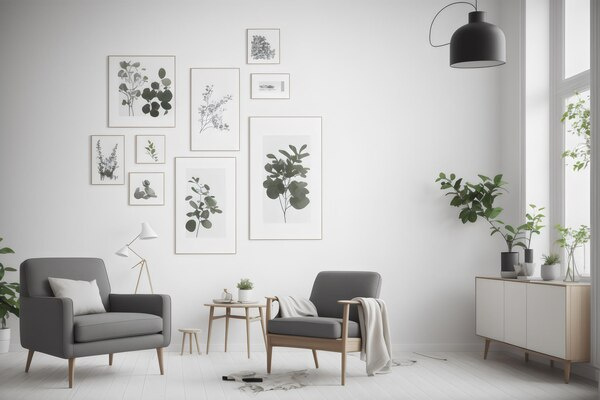Eco-Friendly Design: Sustainable Choices for Your Home
As awareness about climate change and environmental responsibility grows, more homeowners are seeking to create living spaces that reflect their commitment to sustainability. Eco-friendly design is not just a trend; it is an essential shift in how we approach building and decorating our homes. From energy-efficient appliances to sustainably sourced materials, there are numerous ways to make your home a sanctuary of sustainability. Here’s how you can incorporate sustainable choices into your design process.
1. Energy Efficiency and Renewable Energy:

One of the most significant impacts you can make on the environment and your energy bills is through the use of energy-efficient appliances and systems. Start with appliances that are ENERGY STAR-rated, as they require less energy to operate, thus reducing your household's carbon footprint. Consider installing solar panels to harness renewable energy, providing a clean power source for your home. Additionally, smart home technology can be a valuable tool in managing energy consumption by automating lighting, heating, and cooling systems to operate only when necessary.
2. Sustainable Building Materials:
When renovating or constructing a home, the choice of materials plays a crucial role in the environmental impact of the build. Opt for sustainable materials such as bamboo, reclaimed wood, or recycled metal, which require fewer resources to produce and are often more durable. These materials can add unique character and warmth to your home while supporting eco-friendly practices. Additionally, using low-VOC (volatile organic compounds) paints and finishes can improve indoor air quality by reducing harmful emissions.
3. Water Conservation:
Maximizing water efficiency is another essential aspect of eco-friendly design. Install low-flow faucets, showerheads, and dual-flush toilets to reduce water usage without compromising performance. Consider incorporating a rainwater harvesting system to collect and utilize water for gardening and other outdoor needs. Incorporating drought-resistant plants into your landscape design can further conserve water resources by reducing the need for frequent irrigation.
4. Indoor Air Quality:
Indoor air quality is critical to creating a healthy living environment. Focus on using natural, non-toxic materials to minimize the release of harmful chemicals within your home. Consider adding houseplants, which act as natural air purifiers by absorbing toxins and releasing clean oxygen. Additionally, ensure proper ventilation systems are in place to maintain airflow and reduce the accumulation of indoor pollutants.
5. Waste Reduction and Recycling:
An eco-friendly home design prioritizes waste reduction and recycling efforts. During construction or renovation, reduce waste by accurately measuring materials and recycling excess or unused scraps. Incorporate built-in recycling and composting systems into your kitchen design to facilitate responsible waste management daily. Selecting durable and timeless furnishings can also help minimize waste by reducing the need to replace items frequently.
6. Multifunctional Spaces:
With the shift towards minimalist living, designing multifunctional spaces is a sustainable choice that maximizes the utility of each room. Create flexible areas that can adapt to different needs and purposes, reducing the need for excessive furniture and resources. For instance, a guest bedroom can double as an office or studio space, enabling you to make the most of your home's square footage.
7. Mindful Purchasing:
Finally, mindful purchasing is essential to sustainable home design. When shopping, prioritize high-quality, durable products that will stand the test of time rather than inexpensive, short-lived items. Support local artisans and manufacturers to reduce the carbon footprint associated with shipping and to support local economies. Additionally, explore second-hand stores and markets for unique pieces that celebrate sustainability through reuse and recycling.
By thoughtfully incorporating these sustainable practices into your home design, you create a space that reflects your values and contributes positively to the environment. Eco-friendly design allows you to enjoy a beautiful, functional home while playing an active role in protecting the planet for future generations. As more homeowners embrace these practices, the impact of sustainable design will continue to grow, paving the way for a greener, more sustainable future.